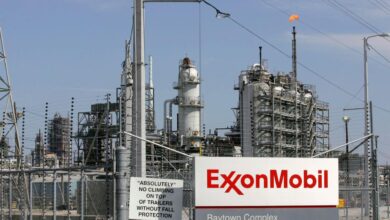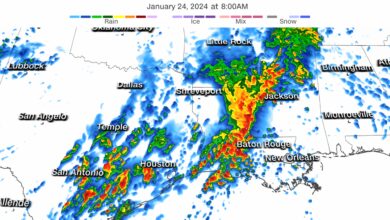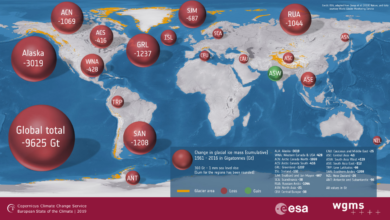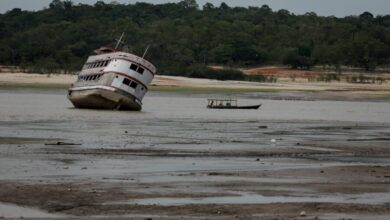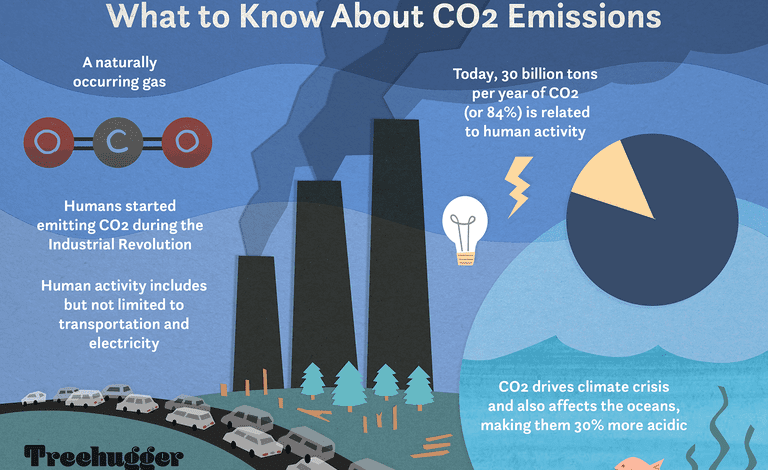
Global Warming Dangerous Threshold A Crucial Point
Global warming dangerous threshold – a point where the planet’s temperature increase triggers irreversible and catastrophic consequences. This threshold isn’t a single, universally agreed-upon number; rather, it’s a complex interplay of scientific data, modeling, and interpretations by various organizations. Understanding this threshold is critical for developing effective strategies to mitigate its potential impacts.
This blog post delves into the complexities of the global warming dangerous threshold, examining its definition, the potential impacts of crossing it, and the factors contributing to our current trajectory. We’ll explore monitoring methods, mitigation strategies, and illustrative case studies, ultimately aiming to foster a deeper understanding of this crucial environmental issue.
Defining the Threshold
The concept of a “global warming dangerous threshold” represents a critical point beyond which the negative impacts of climate change become significantly more severe and irreversible. Understanding this threshold is crucial for developing effective mitigation strategies and adapting to the changing climate. This threshold isn’t a single, universally agreed-upon temperature increase; rather, it encompasses a range of potential impacts and various metrics used to define it.Defining this threshold requires a careful consideration of the scientific understanding of climate change, its impacts, and the potential for cascading effects.
Different organizations and research groups have different perspectives, often reflecting varying priorities and methodologies. This diversity in approaches highlights the complexity of the issue and the ongoing scientific debate.
Scientific Basis for Defining the Threshold
The scientific basis for defining a dangerous threshold relies heavily on climate models, historical data, and projections of future impacts. Key metrics include global average temperature increases, sea-level rise, changes in precipitation patterns, and the frequency and intensity of extreme weather events. These metrics are used to assess the potential for exceeding critical tipping points in the Earth’s climate system.
“The Earth’s climate system exhibits non-linear responses to increasing greenhouse gas concentrations, meaning that small changes in forcing can lead to disproportionately large impacts.”
Climate models, while imperfect, provide valuable tools for simulating the Earth’s climate and predicting future changes under different scenarios of greenhouse gas emissions. These models are constantly being refined and improved, incorporating new data and understanding. The outputs of these models form a crucial part of the scientific basis for assessing the dangerous threshold. For example, various models predict different levels of sea-level rise depending on the emission pathways and warming scenarios.
Different Definitions of the Threshold
Different organizations and groups have varying approaches to defining the dangerous threshold, reflecting their specific priorities and methodologies. The diverse perspectives highlight the complexity of the issue.
| Organization | Definition | Metrics Used |
|---|---|---|
| Intergovernmental Panel on Climate Change (IPCC) | The IPCC reports generally focus on the impacts of exceeding specific temperature increases above pre-industrial levels, highlighting the potential for irreversible changes. | Global average temperature increase, sea-level rise, changes in precipitation patterns, extreme weather events. |
| National Academies of Sciences, Engineering, and Medicine | The Academies often emphasize the importance of considering various climate change impacts beyond temperature increases, like ecosystem disruptions and human health effects. | Impacts on biodiversity, ecosystem services, human health, and infrastructure. |
| World Resources Institute (WRI) | WRI often focuses on the threshold of irreversible changes, highlighting the need for urgent action. | Tipping points in the Earth’s climate system, like ice sheet collapse and changes in ocean currents. |
The table above demonstrates the varying perspectives on defining a dangerous threshold, each organization emphasizing different aspects of the climate crisis. Further research and collaboration among different organizations are essential to achieving a comprehensive understanding of this critical issue.
Impacts of Crossing the Threshold: Global Warming Dangerous Threshold
The point at which global warming surpasses a dangerous threshold represents a significant inflection point in the Earth’s climate system. Exceeding this limit unleashes a cascade of potentially irreversible environmental changes, affecting ecosystems and human societies across the globe. Understanding the potential consequences is crucial for developing effective mitigation and adaptation strategies.
Global warming is rapidly approaching a dangerous threshold, with potentially devastating consequences. The recent controversy surrounding the “Read Like Wind” recommendations, detailed in this article read like wind recommendations scandal , highlights the complex interplay between environmental concerns and the need for responsible policy. While the scandal brings attention to potential issues in implementation, the urgency of addressing the global warming dangerous threshold remains paramount.
Environmental Consequences, Global warming dangerous threshold
Exceeding the dangerous threshold triggers a series of environmental changes with far-reaching consequences. These changes will impact delicate ecosystems and accelerate the pace of environmental degradation. The delicate balance of the planet’s natural systems will be disrupted, leading to unforeseen and potentially catastrophic outcomes. Climate change will manifest in more frequent and intense extreme weather events, such as heatwaves, droughts, floods, and wildfires.
These events will cause widespread damage to infrastructure, disrupt agricultural production, and endanger human lives.
Effects on Ecosystems
The consequences of exceeding the dangerous threshold will have profound effects on various ecosystems. Ocean acidification, driven by increased atmospheric CO2 absorption, threatens marine life, particularly coral reefs and shellfish populations. Rising sea levels will inundate coastal areas, displacing communities and destroying vital ecosystems. Changes in precipitation patterns will alter forest ecosystems, leading to deforestation and increased susceptibility to wildfires.
Polar regions, already vulnerable to climate change, face the risk of accelerated ice melt, further contributing to sea-level rise and disrupting marine ecosystems.
Social and Economic Impacts
Exceeding the dangerous threshold will inevitably lead to significant social and economic impacts. Mass migration, driven by environmental disasters and resource scarcity, will strain global resources and destabilize political systems. The disruption of agricultural production, particularly in vulnerable regions, will lead to food insecurity and malnutrition. The economic costs of repairing damage from extreme weather events will be substantial, further burdening affected communities.
The loss of biodiversity, including the extinction of plant and animal species, will have long-term consequences for the stability of ecosystems and human well-being.
Regional Impacts
The effects of exceeding the dangerous threshold will vary significantly across different regions of the world. A comprehensive understanding of these regional impacts is crucial for targeted mitigation and adaptation strategies. This table Artikels the potential impacts across various regions:
| Region | Potential Impacts |
|---|---|
| Arctic | Accelerated ice melt, rising sea levels, disruption of marine ecosystems, increased risk of permafrost thaw, impacting infrastructure and indigenous communities. |
| Coastal Regions | Increased flooding, saltwater intrusion into freshwater sources, loss of coastal habitats, displacement of populations, damage to infrastructure. |
| Developing Countries | Increased food insecurity, water scarcity, displacement of populations, exacerbation of existing poverty and inequality. |
| Forests | Increased risk of wildfires, changes in species composition, reduced forest productivity, release of stored carbon, disruption of biodiversity. |
| Small Island Nations | Sea-level rise leading to complete inundation and loss of land, displacement of entire populations, damage to infrastructure and economies. |
Factors Contributing to the Threshold
The Earth’s climate system is a complex web of interacting factors, and the delicate balance that maintains a stable climate is increasingly threatened. Understanding the forces pushing us towards a dangerous global warming threshold is crucial for developing effective mitigation strategies. This section explores the key drivers behind the potential for exceeding this critical point, emphasizing the interplay between human activities and natural processes.The likelihood of exceeding the dangerous global warming threshold is a multifaceted issue, influenced by a confluence of factors.
The Earth is rapidly approaching a dangerous threshold regarding global warming, and the urgency is undeniable. Political action is crucial, and figures like Tom Suozzi in the New York congressional race tom suozzi new york congressional race are playing a key role in shaping the narrative and driving the necessary change. Ultimately, our collective actions must push us away from this dangerous precipice and towards a sustainable future.
These include the sheer magnitude of human-induced greenhouse gas emissions, the slow response time of the climate system, and the potential for feedback loops to accelerate warming. Delving into these factors provides a more comprehensive picture of the challenges we face.
Human Activities and Greenhouse Gas Emissions
Human activities, particularly the burning of fossil fuels, are the primary driver of increasing greenhouse gas concentrations in the atmosphere. This relentless release of carbon dioxide, methane, and nitrous oxide traps heat, leading to a gradual warming trend. The cumulative effect of these emissions over decades has already pushed the planet towards the dangerous threshold.Examples of human activities that contribute to greenhouse gas emissions include deforestation, industrial processes, and agricultural practices.
Each activity contributes to the overall increase in greenhouse gases, exacerbating the risk of exceeding the threshold.
Natural Factors Affecting the Threshold
Natural factors, though not the primary driver, can either accelerate or decelerate the approach to the dangerous threshold. Volcanic eruptions, for instance, can inject aerosols into the stratosphere, temporarily reflecting sunlight and causing a cooling effect. This effect is temporary, however, and the long-term warming trend driven by human activities ultimately outweighs the temporary cooling effect.Other natural factors, such as changes in solar irradiance or ocean currents, can also influence global temperatures.
However, the observed warming trend in recent decades is far greater than what can be attributed to natural variability alone. The overwhelming evidence points to human activities as the primary cause of the current warming trend.
Interaction of Factors
The factors contributing to the threshold do not operate in isolation. Instead, they interact in complex ways, influencing the rate and extent of warming. For example, rising temperatures can lead to the melting of permafrost, releasing significant amounts of methane, a potent greenhouse gas, into the atmosphere. This creates a positive feedback loop, where warming accelerates further due to the release of additional greenhouse gases.Similarly, changes in ocean currents or cloud cover can affect the absorption and reflection of solar radiation, further impacting global temperatures.
These interactions make predicting the precise path towards the threshold a challenging task. However, understanding these complex interactions is crucial for developing effective mitigation strategies.
Global warming’s dangerous threshold is a serious concern, and the potential for catastrophic consequences is undeniable. While the threat of runaway climate change looms large, it’s also crucial to consider other global dangers, like Russia’s escalating activities with space-based nuclear weapons, as detailed in this article about russia space nuclear weapon. These factors highlight the interconnectedness of global challenges and the need for urgent international cooperation to address them all, including the potentially disastrous consequences of exceeding global warming’s dangerous threshold.
Examples of Exceeding the Threshold
Past and ongoing instances of climate change provide crucial insights into the potential consequences of exceeding the threshold. The melting of glaciers and ice sheets, rising sea levels, and more frequent and intense heat waves are already observable consequences of the current warming trend. Understanding these trends and their potential acceleration can provide a more realistic estimate of the risks involved.
Global warming is reaching a dangerous threshold, impacting everything from weather patterns to ecosystems. Meanwhile, the ongoing contract negotiations for Chiefs’ star player Andy Reid are creating a lot of buzz, especially in light of recent reports about the contract’s potential terms. This, unfortunately, just distracts from the more serious issue of the global warming dangerous threshold, and the urgency of addressing it before it’s too late.
For the latest updates on Andy Reid Chiefs contract negotiations , check out this news source.
Monitoring and Predicting Future Trends
Staying ahead of global warming’s potential dangerous threshold requires proactive monitoring and accurate predictions. This involves a multi-faceted approach encompassing sophisticated data collection, advanced analytical techniques, and robust modeling. Understanding current trends and anticipating future scenarios allows for the development of targeted mitigation strategies and adaptation plans.
Methods for Monitoring Global Warming
Monitoring global warming necessitates a comprehensive approach, encompassing various data sources and analytical techniques. This ensures a holistic understanding of the complex interactions driving climate change. Crucially, these methods must be designed to identify and quantify trends that could potentially lead to exceeding the dangerous threshold.
- Global Temperature Records: Long-term records of global average temperatures, meticulously maintained by organizations like NASA and NOAA, provide crucial baseline data. These records, spanning decades, allow for the identification of significant warming trends and deviations from historical norms. Analysis of these data can reveal patterns, rate of change, and regional variations in temperature increases.
- Ocean Temperature and Sea Level Rise Monitoring: Ocean temperatures play a critical role in the global climate system. Data from various sources, including buoys, satellites, and Argo floats, continuously monitor ocean heat content and sea level rise. These measurements are vital for understanding thermal expansion of water and its impact on coastal communities. Variations in these parameters provide insights into the potential for exceeding the dangerous threshold.
For instance, sustained increases in ocean heat content are a key indicator of accelerating warming trends.
- Glacier and Ice Sheet Monitoring: Glacial melt rates and ice sheet dynamics are crucial indicators of climate change. Satellite imagery, ground-based observations, and ice core data offer insights into the shrinking ice masses. These observations help assess the contribution of melting ice to sea level rise and the potential for abrupt changes in ice sheet dynamics. For example, accelerated melting of glaciers in the Himalayas significantly contributes to rising water levels in downstream regions.
- Atmospheric Greenhouse Gas Concentrations: Measurements of greenhouse gas concentrations, particularly CO2, are essential for understanding the primary driver of global warming. Observatories like Mauna Loa in Hawaii provide continuous monitoring of atmospheric composition. Analyzing these trends allows for the assessment of human activity’s impact on the global climate system. For instance, a persistent upward trend in atmospheric CO2 levels indicates a continued warming trend.
Technologies Used for Data Collection and Analysis
Advanced technologies are instrumental in collecting and analyzing the vast amounts of data required for effective monitoring and prediction. These technologies facilitate the automation of data collection, enabling real-time analysis and improved forecasting accuracy.
- Remote Sensing: Satellites equipped with sophisticated sensors provide comprehensive coverage of Earth’s surface, enabling the monitoring of various parameters like temperature, sea level, and ice sheet extent. Data from these satellites are used to track changes over time and identify emerging trends.
- Climate Models: Sophisticated climate models simulate complex interactions within the Earth’s climate system. These models incorporate vast datasets to predict future warming scenarios and assess the potential impact of various mitigation strategies. For example, different climate models can predict the potential for regional warming based on specific emission scenarios.
- Data Visualization and Analysis Tools: Data visualization and analysis tools facilitate the identification of patterns and trends in collected data. Interactive dashboards and specialized software enable scientists to identify anomalies and assess the likelihood of exceeding the dangerous threshold. By visually representing the data, researchers can identify correlations and anomalies in various datasets.
Predicting Future Warming Scenarios
Predicting future warming scenarios requires integrating data from multiple sources with sophisticated climate models. This involves considering various emission scenarios, assessing feedback mechanisms, and projecting future changes in temperature, sea level, and other climate variables.
- Emission Scenarios: Different emission scenarios, representing varying levels of human activity, are input into climate models to project potential future warming trends. These scenarios are crucial for assessing the impact of different mitigation strategies.
- Feedback Mechanisms: Feedback mechanisms, such as the melting of permafrost releasing greenhouse gases, need to be considered in climate models to provide accurate projections. These feedback mechanisms can accelerate or dampen the rate of warming.
- Projection of Future Climate Variables: Climate models project future changes in temperature, precipitation, sea level, and other climate variables. These projections provide insights into the potential impacts of exceeding the dangerous threshold. For instance, projections can indicate potential changes in precipitation patterns, leading to more frequent and intense droughts in some regions.
Successful Monitoring Programs
Various regions have established successful monitoring programs that provide valuable insights into climate change impacts. These programs demonstrate the importance of continuous observation and data analysis for informing adaptation strategies.
- Arctic Monitoring Programs: The Arctic is experiencing rapid warming, and monitoring programs in this region, like those conducted by the International Arctic Research Center, provide crucial data on melting ice sheets, rising sea levels, and shifts in ecosystem dynamics.
- Global Climate Observing System (GCOS): GCOS is a global initiative for coordinating climate observations, bringing together numerous organizations and researchers to improve the accuracy and consistency of global climate data.
Mitigation Strategies and Adaptation Measures

The escalating threat of global warming necessitates a multifaceted approach encompassing both mitigation of its causes and adaptation to its unavoidable impacts. This involves implementing strategies to curb greenhouse gas emissions and developing resilience to the consequences of a warming planet. Effective action demands a global commitment and a concerted effort to transition towards sustainable practices.
Mitigation Strategies to Prevent Exceeding the Threshold
Mitigation strategies aim to reduce the concentration of greenhouse gases in the atmosphere, thus preventing the crossing of dangerous global warming thresholds. This requires a shift towards cleaner energy sources, enhanced energy efficiency, and sustainable land use practices.
- Transitioning to Renewable Energy Sources: Renewable energy sources like solar, wind, hydro, and geothermal offer sustainable alternatives to fossil fuels. Increased investment in renewable energy infrastructure, coupled with supportive policies, is crucial for a rapid transition. Examples include large-scale solar farms in the Mojave Desert and offshore wind farms in Europe, which are demonstrating the feasibility and scalability of renewable energy.
The global warming dangerous threshold is a serious concern, impacting everything from weather patterns to potential economic shifts. The ripple effects are particularly evident in the housing market near NYC, where fluctuating prices and demand are becoming increasingly complex. Housing market near NYC is a microcosm of how climate change is altering the economic landscape. This interconnectedness highlights the urgent need for sustainable solutions to prevent further catastrophic effects from the dangerous threshold.
- Improving Energy Efficiency: Minimizing energy consumption through enhanced building insulation, improved transportation systems, and optimized industrial processes significantly reduces carbon emissions. This includes adopting energy-efficient appliances, promoting public transportation, and implementing stricter building codes. Examples include the development of highly efficient LED lighting technologies and the widespread adoption of hybrid and electric vehicles.
- Sustainable Land Use Practices: Protecting and restoring forests, which act as carbon sinks, is vital. Sustainable agricultural practices, reducing deforestation, and promoting afforestation are crucial components of mitigating climate change. Examples include reforestation projects in the Amazon rainforest and sustainable farming practices that minimize soil erosion and carbon emissions.
Adaptation Measures to Reduce Impacts of Exceeding the Threshold
Adaptation measures focus on building resilience to the unavoidable impacts of global warming, such as rising sea levels, extreme weather events, and altered precipitation patterns. This involves developing strategies to manage the risks associated with a changing climate.
- Coastal Protection and Infrastructure Development: Constructing seawalls, restoring coastal ecosystems, and developing resilient infrastructure are crucial for protecting coastal communities from rising sea levels and storm surges. Examples include the construction of seawalls in the Netherlands and the restoration of mangrove forests in coastal areas.
- Water Resource Management: Developing strategies for managing water resources in the face of altered precipitation patterns and droughts is essential. This includes improving water storage capacity, developing drought-resistant crops, and implementing water conservation measures. Examples include the construction of large-scale reservoirs and the development of water-efficient irrigation systems.
- Disaster Risk Reduction: Strengthening early warning systems, improving disaster preparedness, and developing more resilient infrastructure are crucial for mitigating the impact of extreme weather events. Examples include the implementation of flood forecasting and early warning systems in vulnerable regions and the construction of earthquake-resistant buildings.
Comparative Analysis of Mitigation and Adaptation Strategies
| Strategy | Effectiveness | Cost-Benefit Analysis | Examples |
|---|---|---|---|
| Transition to Renewable Energy | High, demonstrable potential to reduce emissions | High upfront investment, but potentially high long-term savings | Solar farms, wind farms |
| Improving Energy Efficiency | High, reduces energy consumption and emissions | Relatively low upfront investment, high long-term savings | Energy-efficient buildings, public transport |
| Sustainable Land Use | High, crucial for carbon sequestration | Requires significant investment in reforestation and sustainable farming | Reforestation projects, sustainable agriculture |
| Coastal Protection | High, reduces vulnerability to sea level rise | High upfront investment, but can protect valuable assets | Seawalls, mangrove restoration |
| Water Resource Management | Moderate, depends on implementation effectiveness | Variable costs depending on scale and technology | Reservoir construction, water-efficient irrigation |
| Disaster Risk Reduction | High, improves resilience to extreme weather | Variable costs depending on preparedness level | Early warning systems, resilient infrastructure |
Illustrative Case Studies
Global warming’s impacts are already being felt across the globe, from melting glaciers to shifting weather patterns. Understanding these localized effects is crucial to developing effective mitigation and adaptation strategies. This section will examine two specific case studies, highlighting the challenges and impacts of exceeding the dangerous warming threshold.
The Maldives: A Nation at Risk
The Maldives, a low-lying island nation in the Indian Ocean, faces an existential threat from rising sea levels. The nation’s average elevation is just a few feet above sea level, making it highly vulnerable to the effects of global warming. Rising sea levels threaten to inundate coastal communities, erode shorelines, and displace populations.
- Impact on Coastal Communities: Coastal erosion is already a significant problem, leading to the loss of homes and livelihoods. The increased frequency and intensity of storm surges further exacerbate these issues, causing substantial damage to infrastructure and disrupting essential services. Data from the Maldives Meteorological Service shows a notable increase in the frequency of extreme weather events in recent years, correlating with global temperature increases.
- Challenges: Limited resources and technological capabilities pose significant obstacles to adaptation efforts. The high cost of building seawalls and other protective measures, coupled with the need for extensive relocation plans, makes the task even more complex.
- Mitigation Strategies: The Maldives government is actively pursuing various mitigation strategies, including investments in climate-resilient infrastructure and promoting renewable energy sources. International partnerships are also crucial in providing financial and technical support to bolster these efforts. For example, the nation is actively participating in international agreements aimed at reducing greenhouse gas emissions.
The Arctic Region: A Melting Ice Cap
The Arctic region is experiencing rapid warming, with temperatures rising at a rate significantly higher than the global average. This warming trend is causing widespread changes in the environment, from melting glaciers and ice sheets to altering wildlife habitats.
- Impact on Ecosystem: The loss of sea ice disrupts the delicate balance of the Arctic ecosystem, impacting species such as polar bears, walruses, and seals, whose survival depends on sea ice for hunting and breeding. Decreased ice cover also impacts marine ecosystems, affecting fish populations and impacting the entire food web.
- Challenges: The remote and challenging terrain of the Arctic presents logistical difficulties for monitoring and responding to these changes. The region’s unique ecosystem and its complex interactions with global climate systems make accurate predictions challenging. Indigenous communities, heavily reliant on the environment for sustenance, face the immediate and significant threat of losing their traditional way of life.
- Mitigation Strategies: Reducing greenhouse gas emissions is paramount. International collaboration and research are essential to better understand and address the complex challenges facing the Arctic. Supporting sustainable development initiatives that minimize human impact on the environment is crucial.
Key Findings Summary
| Case Study | Geographical Location | Challenges | Mitigation Strategies |
|---|---|---|---|
| The Maldives | Indian Ocean | Rising sea levels, coastal erosion, limited resources, high cost of adaptation | Investments in climate-resilient infrastructure, renewable energy, international partnerships |
| The Arctic Region | High-latitude regions | Melting glaciers and ice sheets, ecosystem disruption, remote terrain, logistical challenges, impact on indigenous communities | Reducing greenhouse gas emissions, international collaboration, research, sustainable development initiatives |
Epilogue

In conclusion, the global warming dangerous threshold represents a critical juncture in our planet’s history. Exceeding this threshold could unleash devastating environmental and societal consequences. However, proactive measures, including mitigation strategies and adaptive responses, can help us avoid or lessen the severity of these impacts. By understanding the science behind this threshold and its potential consequences, we can work together towards a more sustainable future.
Questions and Answers
What are some common metrics used to define the threshold?
Common metrics include global average temperature increases, sea level rise projections, and the rate of ice sheet melt. Different organizations may emphasize different metrics depending on their specific focus.
What are some examples of successful mitigation projects?
Many countries and organizations are implementing renewable energy initiatives, promoting energy efficiency, and investing in carbon capture technologies. The success of these projects often depends on factors like political will, economic incentives, and technological advancements.
How reliable are the models used to predict future warming scenarios?
Climate models are sophisticated tools, but they are not perfect. The accuracy of predictions depends on the quality of input data, the complexity of the model, and the assumptions made about future emissions and other factors. Ongoing research and refinement of these models are essential.
What is the role of natural factors in influencing the threshold?
Natural factors, like volcanic eruptions or variations in solar activity, can influence global temperatures, but human-induced greenhouse gas emissions are the primary driver of the current warming trend.

